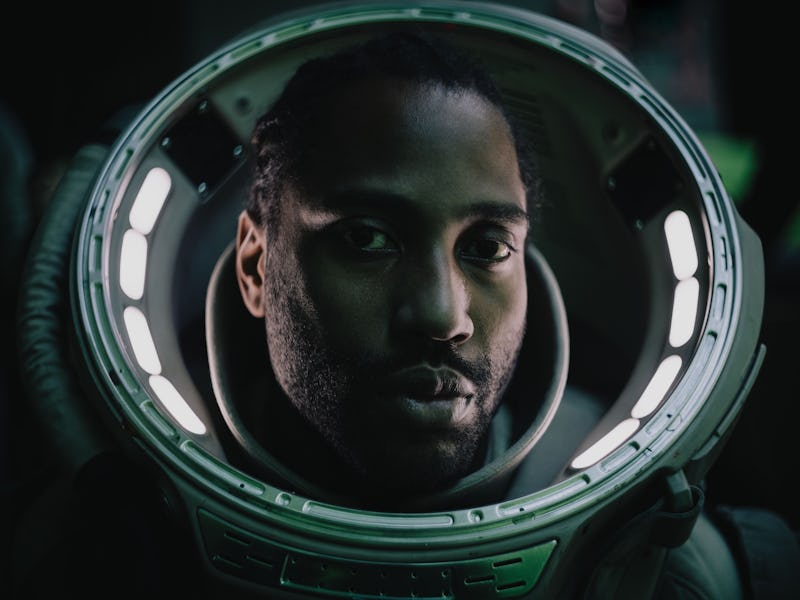Star Wars Director Reveals the Wasteful Reason Disney Movies Cost So Much
Blockbusters have always been expensive, but they don’t always need to be.

Blockbuster making has always been an expensive business, but studios like Disney have pushed the practice to eyebrow-raising new heights. 2023 alone has seen dozens of movies cross the finish line with a budget higher than $200 million. For some, like Disney’s live-action Little Mermaid, a $250 million budget makes a lot of sense. But for others, like Marvel’s latest film, a $270 million price tag is definitely pushing the limits.
Forbes recently reported that the studio spent roughly $274.8 million on Captain Marvel sequel The Marvels. It makes The Marvels one of the most expensive Marvel pictures to date, and the highest-budgeted film directed by a Black woman, per Vanity Fair. The Marvels director Nia DaCosta has come a long way from her directorial debut, Little Woods, which she made on a $1 million budget.
DaCosta isn’t the only filmmaker that’s come from humbler beginnings: Disney and its subsidiaries have made a habit of plucking indie auteurs with only a handful of films under their belts. Star Wars director Gareth Edwards made just two — the modest Monsters and 2014’s Godzilla — before he was tapped to helm Rogue One. The latter suffered from a notoriously troubled production, with a ballooning budget that landed somewhere around $200 million. Fortunately, Rogue One more than recouped its efforts, pulling in a billion at the box office — but Edwards, apparently, was never comfortable spending that much money for the film. With his latest effort, The Creator, Edwards found a way to split the difference. He’s bringing blockbuster filmmaking back to basics, and exposing the practices that make Disney productions so costly.
The Creator has the sheen of an expensive studio blockbuster, but it was made with indie sensibilities.
Not unlike Rogue One, The Creator has the feel of a pricey film. Its intricate VFX and on-location sets could have easily demanded a hefty fee for 20th Century Studios. But the film was produced on an $80 million budget, according to Variety, all because Edwards was determined to find a more sustainable way forward.
“It made total sense to have 300 people surrounding you when you’ve got tanks and dozens of soldiers running across the Golden Gate Bridge as monsters are attacking,” Edwards tells Variety, referencing a key scene in Godzilla. “It didn’t make as much sense to have 300 people around you when you’re filming in a room with two actors talking to each other. That’s the bit I wanted to try to do differently.”
Edwards’ dream set has always been as sparse as possible. “Basically, his perfect world would be him, a couple of actors, and that’s it,” says Greg Fraser, cinematographer for both Rogue One and The Creator. Their first collaboration in 2016 saw them testing out Edwards’ perfect world by shooting “like it was an independent movie” at least one hour each day. When the duo re-teamed for The Creator, they were determined to strip sets down to their bare essentials.
Godzilla marked Edwards’ first attempt at a blockbuster, and he learned a lot on the set.
Edwards acknowledges that there are some practices inherent to the filmmaking process, but not all of them are necessary. With The Creator, Edwards created a hybrid model, taking the best parts of indie filmmaking and bringing them to his blockbuster set: “Sometimes [you] have the big set-pieces where you need all that crew, and sometimes [you] have just two people in a room.”
Edwards doesn’t say as much, but his comments on his indie approach to a blockbuster film suggests Disney productions have not come around to this strategy — which means the likely reason that Marvel or Star Wars movie budgets balloon so much is that there are 300 people on set for a simple dialogue scene.
For what it’s worth, it seems like Edwards’ strategy is paying off — even if he admits that he still has to keep up with the “pace that the machine is working at.” But there are ways to adapt. “If you don’t constantly fight it, you’re going to end up making a film exactly the way everyone always makes a film,” Edwards says. To me, it was a deal breaker; if we weren’t going to do this process differently, I didn’t want to do it.”